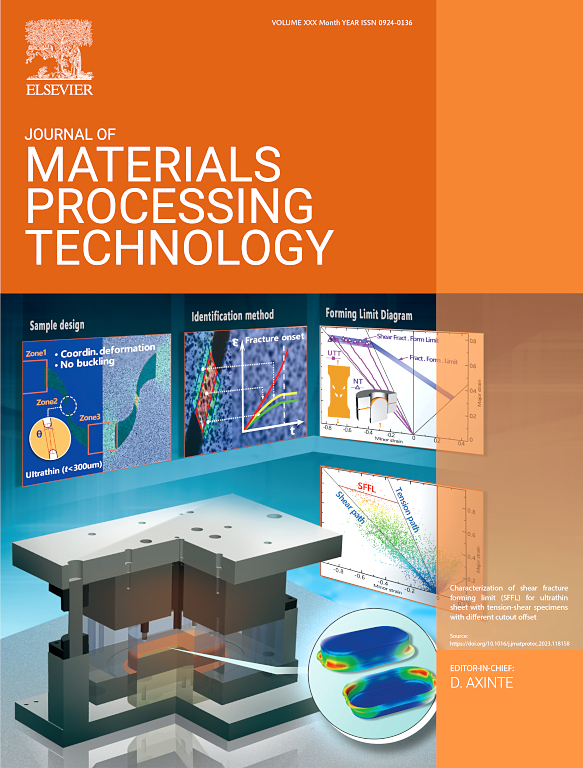Improved crack resistance and toughness of laser-clad H13 steel coatings enabled by CoCrFeNi transition layer
IF 7.5
2区 材料科学
Q1 ENGINEERING, INDUSTRIAL
Journal of Materials Processing Technology
Pub Date : 2025-08-26
DOI:10.1016/j.jmatprotec.2025.119036
引用次数: 0
Abstract
Current research on directed energy deposition (DED) repair predominantly focuses on enhancing surface properties while often neglecting quench-induced embrittlement in thermally sensitive materials like H13 steel, which can lead to premature failure under service loads. To address this, a ductile CoCrFeNi alloy transition layer was introduced between a TiC-reinforced wear-resistant coating and the H13 substrate, forming a "hard-soft-hard-soft" laminated structure that eliminates the need for post-repair heat treatment. This approach alleviates stress concentration in the brittle heat-affected zone (HAZ) through modulus-gradient-driven stress redistribution and crack energy dissipation via the plasticity of the transition layer. Experimental results demonstrate an 80 % reduction in crack density and a 22 % increase in impact resistance. The synergy between the stress-buffering transition layer and the energy-dissipating protective coating establishes a dual-protection mechanism, safeguarding the substrate from catastrophic failure. This work redefines the paradigm of laser-based repair by simultaneously mitigating embrittlement and enhancing surface hardening, offering generalizable for laser repair of quench-prone materials (e.g., tool steels, martensitic stainless steels) in heavy-duty machinery and aerospace applications.
CoCrFeNi过渡层提高了激光熔覆H13钢涂层的抗裂性和韧性
目前对定向能沉积(DED)修复的研究主要集中在提高表面性能上,而往往忽视了H13钢等热敏材料的淬火脆性,这可能导致材料在使用载荷下过早失效。为了解决这个问题,在tic增强耐磨涂层和H13基体之间引入了一层韧性的CoCrFeNi合金过渡层,形成了“硬-软-硬-软”的层状结构,从而消除了修复后热处理的需要。该方法通过模量梯度驱动的应力重分布和过渡层的塑性耗散裂纹能量来缓解脆性热影响区(HAZ)的应力集中。实验结果表明,裂纹密度降低80 %,抗冲击能力提高22 %。应力缓冲过渡层和耗能保护涂层之间的协同作用建立了双重保护机制,保护基体免受灾难性破坏。这项工作通过同时减轻脆化和增强表面硬化,重新定义了基于激光修复的范例,为重型机械和航空航天应用中容易淬火的材料(例如工具钢,马氏体不锈钢)的激光修复提供了通用性。
本文章由计算机程序翻译,如有差异,请以英文原文为准。
求助全文
约1分钟内获得全文
求助全文
来源期刊

Journal of Materials Processing Technology
工程技术-材料科学:综合
CiteScore
12.60
自引率
4.80%
发文量
403
审稿时长
29 days
期刊介绍:
The Journal of Materials Processing Technology covers the processing techniques used in manufacturing components from metals and other materials. The journal aims to publish full research papers of original, significant and rigorous work and so to contribute to increased production efficiency and improved component performance.
Areas of interest to the journal include:
• Casting, forming and machining
• Additive processing and joining technologies
• The evolution of material properties under the specific conditions met in manufacturing processes
• Surface engineering when it relates specifically to a manufacturing process
• Design and behavior of equipment and tools.
 求助内容:
求助内容: 应助结果提醒方式:
应助结果提醒方式:


